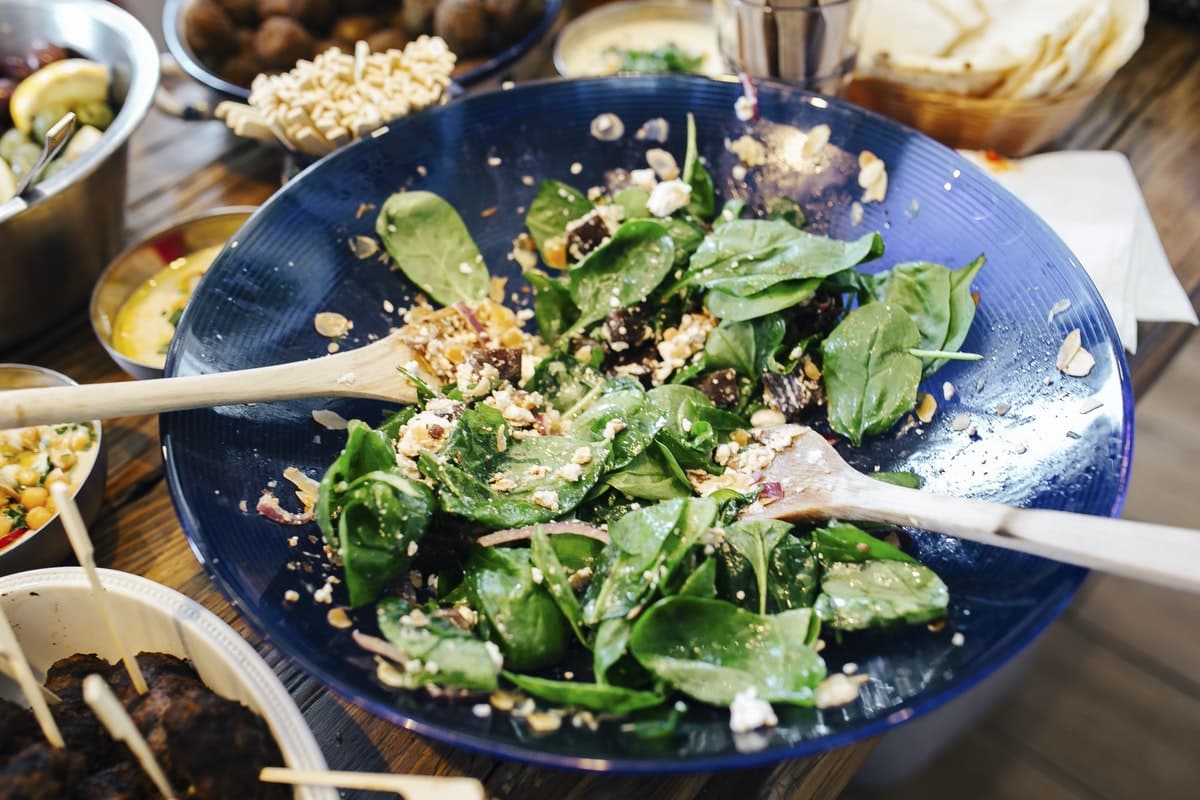
I'm sorry, but eating a salad doesn't automatically equate to having a healthy meal. While some salad options can be super nutritious and support your weight-loss efforts, others can sabotage the number on the scale (and your other health-related goals).
Here's a look at eight salad mistakes you're making that could derail your good intentions and hurt your weight-loss efforts.
The worst mistakes when eating salad to lose weight
You don't add a protein
When your goal is to lose weight, you may think you need to skimp on salad ingredients to cut calories, but cutting out a macronutrient like protein is a big mistake.
That's because if you omit the filling protein in your salad, the vegetables won't count as a complete meal. This macronutrient slows digestion and stabilizes blood sugar, so when it's missing from your salad, you're likely to feel unsatisfied and reach for more food later or later in the day.
In fact, a high-protein diet not only increases satiety, but can also reduce fat mass and help preserve lean muscle during weight loss, according to a November 2014 study in Nutrition & Metabolism.
To solve this you can add healthy proteins such as eggs, chicken breast, turkey, fish, tofu, nuts and seeds.
You choose the wrong type of protein
Although protein is an essential part of a healthy salad, the type you choose makes all the difference when it comes to losing weight.
Fatty protein is not only bad for your waistline, but eating foods high in saturated fat can also raise your bad cholesterol, which increases your risk of heart disease.
To prevent your bowl of veggies from becoming a high-calorie bomb, choose lean proteins like grilled chicken, shrimp and fish. Plant-based options like vegetables and tofu they are also excellent.
In fact, people who eat more plant protein (and less animal products) may enjoy longer life and a reduced risk of heart disease, according to a July 2020 meta-analysis in The BMJ.

You forget about healthy fats
While you'll want to avoid piling your salad plate with saturated fat to help with weight loss (and overall good health), you don't want to avoid fat entirely. Like lean protein, healthy fats they slow digestion, keep you full and are key to a balanced meal.
To fix this, include in your salads heart-healthy fats like avocado, dressings based on olive oil, nuts and seeds. That being said, healthy fats are calorie-dense, so be sure to practice portion control and enjoy them in moderation.
You only use iceberg lettuce
It's not the end of the world if your salad contains nothing but iceberg (it's better than eating a double bacon cheeseburger).
But iceberg doesn't have all the nutrients of darker greens (spinach, arugula, romaine lettuce, or mixed greens). In fact, dark leafy greens like kale not only contain more antioxidants, fiber, and iron, but also offer a stronger, more robust texture, which can boost your fullness factor.
You don't add enough vegetables
Lettuce leaves do not have to be the only vegetable in your salad bowl.
When a salad is devoid of vegetables and made up mostly of other foods, the salad game will be weak. The main point of eating a salad is to increase your vegetable intake and get more nutrients, antioxidants, and fiber.
With that in mind, the bulk of the salad should be a base of raw or cooked vegetables.

You load up on ingredients
For some people, the flavorful dressings are the best part of the salad. But add-ins like tortilla strips, cheese, croutons, candied nuts, and bacon bits can defeat the point of eating a salad for health and weight loss reasons.
For a crunchy texture, scoop out the croutons and add a handful of heart-healthy raw nuts and seeds. If you prefer a bit of sweetness, throw some antioxidant-rich blueberries or blackberries into the mix.
You always eat pre-made salads
Sure, they're quick, but premade salads can contain unhealthy ingredients.
Unless you can visually see the components of your salad in a container, and they are mostly vegetables with healthy dressings on the side, pre-made salads can be a big mystery.
Just like when a chef mixes up his salad dressing beforehand, you have no control over which ingredients are added and how many were used. In other words, you may think you're having a healthy meal, but you don't know much about how much bacon, cheese, and dressing has added an extra 500-plus calories.
You put too much dressing
If you think salads are boring and bland, it's all too easy to drown your greens in a creamy, high-fat, high-calorie dressing to enhance the flavor. But, saturated fat doesn't do you any favors in the health or weight loss department.
It is recommended to choose olive oil with vinegar and dressings based on avocado with heart-healthy fats that are not only bursting with flavor but also satisfy your stomach.
Plus, fat helps your body absorb all the vitamins and minerals found in nutritious vegetables, including vitamins A, D, E, and K.
When you go out to dinner, ask for your dressing on the side. You'll end up using much less than if the cook mixed it first. There's no telling how much they use, and it can end up sending the calories in your 'healthy' salad through the roof.
And remember to practice portion control by limiting yourself to 2 tablespoons.